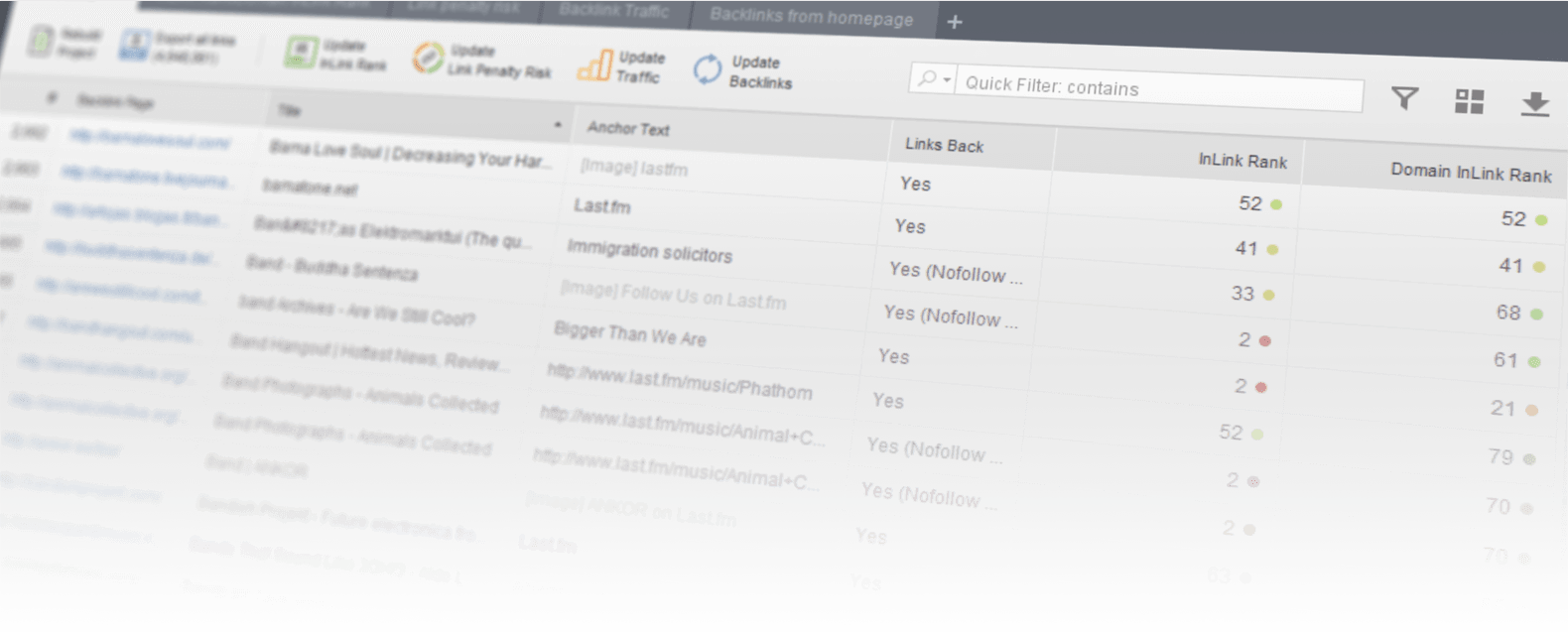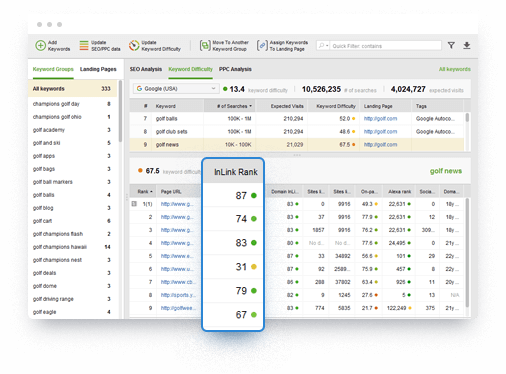

InLink Rank will show you just how much importance each of your pages has in search engines' eyes. With monthly InLink Rank updates, you can easily track how your site's ranking power grows over time, and see which of your SEO efforts make the biggest difference.
By a high InLink Rank, you can easily spot the most valuable links in your profile. Similarly, a low InLink Rank is a great way to identify low quality, spammy links you may want to get rid of to stay safe from Penguin and manual penalties.


When Google closed off access to PageRank, link prospecting became a complicated task that involved way more manual work than you could afford. Well, forget that. With InLink Rank, you can instantly see how authoritative any prospect is — and easily pick the best link opportunities.
The link juice that flows in to a certain page of your site then gets passed on to your other pages via internal links. With InLink Rank in WebSite Auditor, you can see exactly how the ranking power is distributed — and improve the authority of your most important pages by smarter internal linking.


With SEO PowerSuite's InLink Rank, you can estimate the authority of your competitors' websites, see which of their backlinks bring in the most ranking power, and which of their pages enjoy the most link love — and learn from their strategies!
Without an accurate PageRank alternative, many other SEO metrics have become less reliable. With InLink Rank out, numerous SEO PowerSuite metrics (Keyword Difficulty, Penalty Risk, Domain Strength, and Link Value) now have a solid foundation for accurate, relevant data you can count on.

Like all new features, InLink Rank is free for all current SEO PowerSuite users. You can try it yourself in SEO PowerSuite's free version, and get access to InLink Rank for an unlimited number of sites, pages, and backlinks by getting an SEO PowerSuite license.